-
Remapping coastal areas damaged by Hurricane Sandy
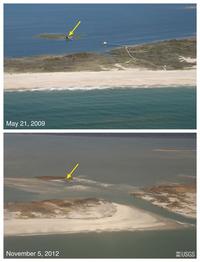
Hurricane Sandy caused wide-scale landscape-altering destruction, resulting in an estimated damage of $50 billion, making Sandy the second-costliest cyclone to hit the United States since 1900. “Sandy’s most fundamental lesson is that storm vulnerability is a direct consequence of the elevation of coastal communities in relation to storm waves,” says USGS Kevin Gallagher. Three federal agencies are using ships, aircraft, and satellites to measure water depth, look for submerged debris, and record altered shorelines in high priority areas from South Carolina to Maine.
-
-
Demolition of building allows study of earthquake along Calif. Hayward Fault
In an effort to track which area of California’s East Bay would suffer the worst shaking in future earthquakes caused by the dangerous Hayward Fault, the U.S Geological Survey (USGS) initiated an artificial earthquake through the densely populated area of valleys and hills across bay from San Francisco.
-
-
Bay Bridge repairs expensive, slow
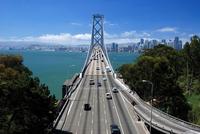
California’s 8-mile San Francisco-Oakland Bay Bridge was designed and built in the 1930s in about 5.5 years at a cost of $78 million, well under budget and ahead of schedule. Presently, the 2-mile eastern span of the bridge needs to be replaced, and it has taken the state five years just to design the replacement. Construction is taking about three times the expected time, and the $6.4 billion budget is almost five times the estimate provided by engineers.
-
-
Post-Sandy infrastructure must be more resilient: Sandy Task Force
The task force appointed by President Barack Obama, charged with developing a strategy for rebuilding areas damaged by Superstorm Sandy, has urged coastal communities to recognize that owing to climate change, storms are going to be more frequent and more destructive, and that floods are going to occur more frequently. The best way to prepare for the more extreme weather ahead is to build a more robust and resilient infrastructure that can withstand the more demanding challenges.
-
-
Predicting when lightning will strike
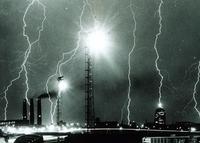
When something is unlikely to happen, people often say that there is a greater chance of being struck by lightning. The fact is, however, that lightning does strike, and is one of the leading weather-related causes of death and injury. Furthermore, important infrastructure including airports, hospitals, sports stadiums, and power lines can often be affected by lighting. Electronic components are particularly vulnerable to lightning-induced transient voltages. Lightning is estimated to cause up to 16 percent of forest fires in the EU, costing 70 million euros in mitigation efforts a year. The EU-funded LOLIGHT (Lightning Mapping and Supercell Tracking System) project sought to address this by developing a low-cost system capable of detecting lightning to an accuracy of 100 meters.
-
-
New levee system offers New Orleans better protection
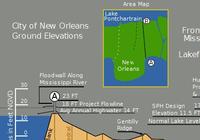
With the busiest period of the 2013 hurricane season approaching metro New Orleans, the area is ready to face the challenge with a flood control system worth about $14.5 billion. The network of levees, floodwalls, and pumps, its designers say, should nearly eliminate the risk of flooding from most hurricanes, and substantially reduces flooding from hurricanes the size of 2005 Hurricane Katrina.
-
-
Ultrathin radios enable flexible structural-health monitoring system
Currently, engineers can use single-point sensors or fiber optic strips to detect structural problems, but the devices can collect data over relatively small spaces. The problem is that many failures develop over large areas and cannot be detect that at an early stage. The 2007 collapse of a highway bridge in Minneapolis, for example, developed over a gusset plate with an area of several square meters, far too large for current monitoring systems to practically survey. Researchers have developed ultrathin radios which can be embedded directly on plastic sheets, which can be applied to walls and other structures. The innovation could be used for new devices ranging from an invisible communications system inside buildings to sophisticated, flexible structural health monitoring system for use on bridges, buildings, roads, pipelines, and other structures.
-
-
Cost of flood losses in major coastal cities to exceed $50 billion by 2050
A new study estimate present and future flood losses — or the global cost of flooding — in 136 of the world’s largest coastal cities, taking into account existing coastal protections. Average global flood losses in 2005, estimated at about $6 billion per year, could increase to $52 billion by 2050 with projected socio-economic change alone. Due to their high wealth and low protection level, three American cities — Miami, New York City, and New Orleans — are responsible for 31 percent of the losses across the 136 cities.
-
-
Investigating earthquake retrofits for “soft” first-floor buildings
A team of researchers has spent the last month shaking a four-story building on the world’s largest outdoor shake table at the University of California, San Diego, to learn how to make structures with first-floor garages better withstand seismic shocks. Since July, the team has successfully tested a variety of earthquake retrofits on a full-scale, 44,000-square-foot building built specifically for the tests at the Englekirk Structural Engineering Center at UCSD. The structure — three stories atop an open first floor — has survived three of four simulated seismic events of increasing strength on the shake table.
-
-
Accessible critical rare Earth deposit confirmed in Montana
U.S. Rare Earths, Inc. (UREE) the other day announced the results of its 2013 exploration in Lemhi Pass, Montana. The company says the results confirmed that its properties have the highest accessible rare earth deposit in North America.
-
-
Sandy shows need for more effective preparedness, resiliency standards
The rebuilding efforts following the devastation wreaked by Superstorm Sandy have triggered a discussion over preparedness and resiliency in America’s commercial and residential buildings.Some experts callfor a presidential appointment of a building resilience “’czar”’ with authority to coordinate and seek synergies between public and private sector initiatives.
-
-
Louisiana energy companies sued over destruction of New Orleans' wetlands
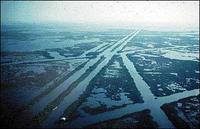
The Louisiana oil and gas industry has dredged more than 10,000 miles of canals through the state’s wetlands, causing the destruction of natural buffers and barriers which, in the past, had moderated the impact of hurricanes and protected New Orleans from severe storms. The Army Corps of Engineers has embarked on a $14.6 billion plan to undo some of the damage caused by the energy companies. The plan consists of levee improvement, wetland restoration, and land reclamation to make New Orleans better protected in the face of rising seas and more frequent and severe extreme weather events. The Southeast Louisiana Flood Protection Authority East (SLFPAE) has filed suit against 94energy companies,asking the court to order the companies to do their part to correct the problem they have caused.
-
-
U.S. power plants, utilities face growing cyber vulnerability
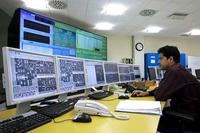
American power plants and utility companies face a growing cyber vulnerability. No U.S power plant has so far suffered a significant cyberattack, even if small-scale attacks are nearly constant, but experts say preventative actions must be taken to ensure safety. Utilities provide services which, if disrupted for long periods of time, may result in economic chaos and may even lead to social unrest.
-
-
Heat waves to become more frequent, severe
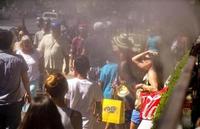
Climate change is set to trigger more frequent and severe heat waves in the next thirty years regardless of the amount of carbon dioxide (CO2) we emit into the atmosphere, a new study has shown. In the first half of the twenty-first century, these projections will occur regardless of the amount of CO2 emitted into the atmosphere. After then, the rise in frequency of extreme heat waves becomes dependent on the emission scenario adopted.
-
-
NSA revelations hobble pursuit of a comprehensive cyberdefense initiative
NSA director General Keith Alexander has proposed a digital version of Ronald Reagan’s space-based Star Wars missile defense program, which Reagan unveiled in 1983. In Alexander’s vision, when a cyberattack is launched at the United States, the defense system would intercept and thwart the attack before it caused any damage. Intercepting a cyberattack would require the NSA to tap, track, and scan all cyber traffic entering the United States. The technology needed to intercept cyberattacks, however, is strikingly similar to the technology the NSA uses for the types of surveillance Snowden exposed. Post-Snowden, it is doubtful that the administration would pursue a comprehensive cyberdefense initiative, or that lawmakers would accept it.
-
- All
- Regional
- Water
- Biometrics
- Borders/Immig
- Business
- Cybersecurity
- Detection
- Disasters
- Government
- Infrastructure
- International
- Public health
- Public Safety
- Communication interoperabillity
- Emergency services
- Emergency medical services
- Fire
- First response
- IEDs
- Law Enforcement
- Law Enforcement Technology
- Military technology
- Nonlethal weapons
- Nuclear weapons
- Personal protection equipment
- Police
- Notification /alert systems
- Situational awareness
- Weapons systems
- Sci-Tech
- Sector Reports
- Surveillance
- Transportation
Advertising & Marketing: advertise@newswirepubs.com
Editorial: editor@newswirepubs.com
General: info@newswirepubs.com
2010-2011 © News Wire Publications, LLC News Wire Publications, LLC
220 Old Country Road | Suite 200 | Mineola | New York | 11501
Permissions and Policies
Editorial: editor@newswirepubs.com
General: info@newswirepubs.com
2010-2011 © News Wire Publications, LLC News Wire Publications, LLC
220 Old Country Road | Suite 200 | Mineola | New York | 11501
Permissions and Policies
